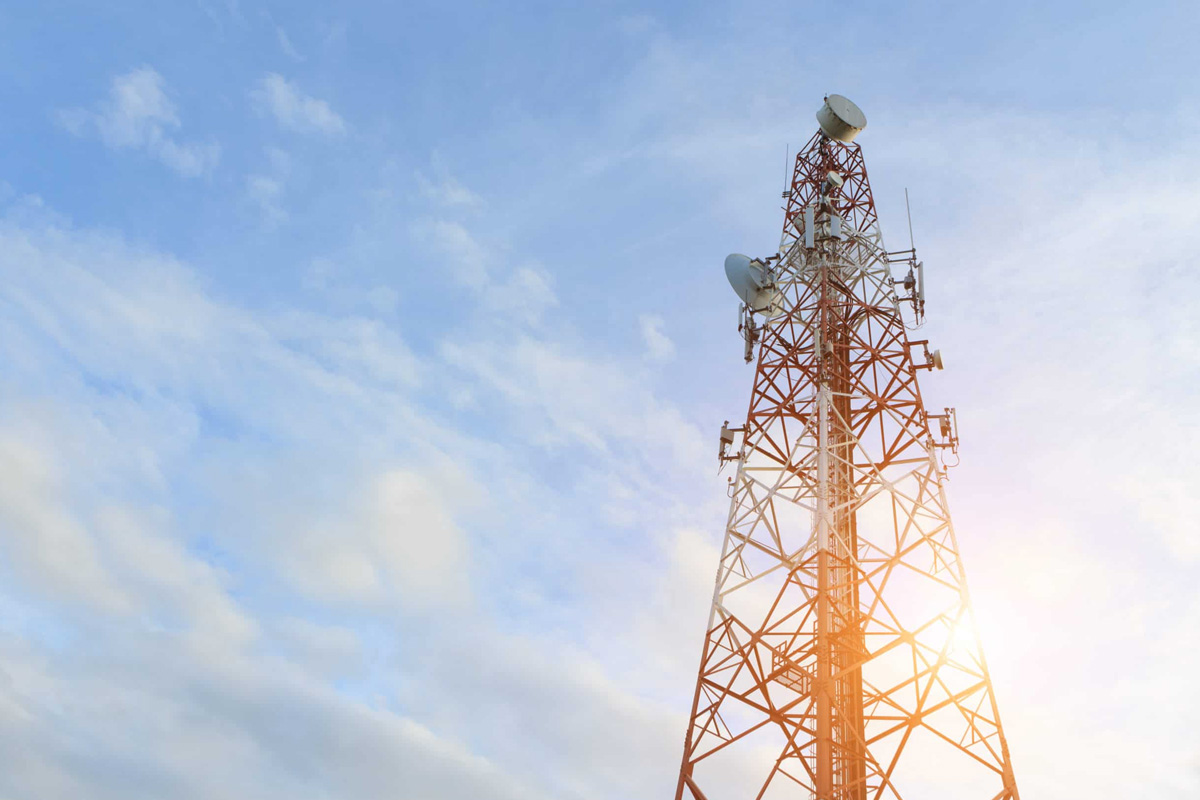The traditional method of using landline fire alarm and security systems to transmit emergency signals across telephone wires has proven unsafe, unreliable, and slow—rendering businesses and retailers without the security they need in times of crisis.Thankfully, modern advancements have produced more reliable security features, such as cellular alarm monitoring, wireless technology that transmits communications to fire alarm and security monitoring stations via cellular towers.
These cutting-edge systems mitigate risks of disruption, enable faster signal transmission, and even save users money—facilitating more reliable, consistent, and expeditious signaling in emergency situations.
What Is Cellular Alarm Monitoring?
Cellular alarm monitoring sends data, information, and signals to fire alarm and security monitoring stations via cellular towers in the event of an emergency.
While traditional monitoring systems have relied on landline or telephone wires for such signaling, these methods are becoming obsolete.
Not only do such systems require rewiring and tedious maintenance, but they are less secure—vulnerable to wire cutting, disablement, extreme weather disruptions, and other risks.
Instead, cellular alarm monitoring utilizes cellular communicators to rapidly send emergency signals through cellular towers—negating reliance on changeable wire conditions.
Benefits of Cellular Monitoring
Cellular monitoring and other automation systems are becoming the new standard in commercial, retail, and industrial fire alarm and security.
There are several reasons for this surge in popularity—and many clear advantages.
More Robust Safety Posture
Traditional, wire-reliant landline systems often fall victim to burglars, who disable them by simply cutting the power lines.
“After cutting the wires, the burglars watch and wait,” warns a crime alert statement from nonprofit trade association the Jewelers’ Security Alliance in an Instore Magazine article. “If the burglars feel safe after having witnessed the owner or police response or lack of response to the cut wires, they will break into the store, often by cutting through the roof or sidewall.”
Cellular alarm monitoring’s wireless nature eliminates this risk. With no wires to cut, cellular communicators instantly signal fire alarm and security monitoring stations in the event of a break-in.
These systems are often more resilient against extreme weather and other system disruptions, too, facilitating a more robust security posture.
Faster Signaling
There are numerous reasons why cellular alarm monitoring provides faster signal transmission than landlines, many of which revolve around wireless composition and utilization of high-speed signals.
Wireless communications don’t rely on wire disruptions, switches, and other breaks in communication—yielding faster, uninterrupted signaling in emergencies.
Additionally, utilization of high-speed 4G LTE or 5G enables faster-than-ever signaling. A study by Speedtest.net ranking global mobile and fixed broadband speeds documents consistent climbs in the United States.
Utilizing such ever-improving technology enables rapid notification to fire alarm and security monitoring stations when it’s most vital.
Easy Installation
When it comes to installing these systems, cellular monitoring negates the need for tedious rewiring. Rather, installation typically includes the addition of a centralized control panel—the main hub and communicator to fire alarm and security monitoring stations.
Sophisticated system installations might also include door sensors, window sensors, motion detectors, glass break detectors, and sirens. Depending on the site’s conditions, experts may also implement services and devices such as lighting controls, cellular backup monitoring, temperature sensors, water sensors, and two-way radio monitoring.
Cost Savings
Utilizing such cutting-edge technology saves users money, too!
Customers no longer pay for two dedicated phone lines, just the cellular communicator—consolidating payments, slashing costs, and saving money.
SMART-Enabled Convenience
Although it’s not a requirement for cellular alarm monitoring customers to own smartphones, they can be handy tools for controlling these systems.
In the vein of modern SMART products, linking your smartphone to your cellular monitoring system enables easy navigation of your alarm systems—with your phone serving as a remote control—and further enhancing the instantaneous, streamlined capabilities of this technology.
Cellular Alarm Monitoring & Fiber Optics Trends
For some, cellular monitoring is not merely a convenience, but a necessity.
Phone companies such as Verizon and AT&T no longer repair copper telephone lines when they need an upgrade—instead, they replace them with fiber optics, explains Derek Splendorio, Vice President of Double R Security.
In contrast with copper lines, fiber optics technology transmits information as light through strands of glass or plastic.
According to an analysis from the international nonprofit Fiber Optics Association (FOA), this technology accommodates more than 1,000 times the bandwidth for 100 times greater distances. As opposed to 24 voice channels typically offered through copper cables, fiber optics boasts more than 32,000.
Unfortunately, despite its faster speeds, the technology has a potentially lethal blind spot. The control panels of fire and burglar alarms traditionally utilized certain copper line-specific voltages to communicate. Since phone companies are no longer repairing those copper lines but replacing them with fiber optics, alarm systems may not be able to relay such critical data to the proper authorities or fire alarm and security monitoring stations.
“So, meaning, that if there was a fire, carbon monoxide and/or burglar alarm, it may not be getting transmitted to the proper authorities to get dispatched, because it's not communicating,” warns Splendorio.
This crucial lapse in communication could mean the difference between life and death.
The solution? Cellular monitoring.
Installing cellular alarm monitoring into even fiber optics systems bridges critical communication and signaling gaps—with the cellular network connecting directly to alarm systems’ panels, standalone and independent of problematic lines.
Cellular communicators transmit all emergency signals over the dedicated network, regardless of voltage lapses—facilitating timely emergency reporting and response.
Double R: Your Cellular Alarm Monitoring Solution
Whether you’re looking to optimize your fire alarm and security systems and leverage modern tech or simply reduce signal gaps after a fiber optics update, cellular alarm monitoring is the preeminent solution for fast, reliable security.
Its wireless composition eliminates risks associated with wire cutting, extreme weather outages, and other disruptions, ensuring reliable, consistent emergency signaling when you need it most.
While there are a variety of fire alarm and security solutions to choose from, few boast the "customer first" reputation, seamless installations, and incomparable workmanship of Double R.
Whether you’re upgrading your company’s security posture with cellular alarm monitoring, installing fire alarms and card access systems, or bringing carbon monoxide requirements up to code, our experienced, expert technicians will ensure your systems are streamlined and functioning optimally for the fastest and most dependable emergency response.
With more than 30 years of industry experience, Double R is the preeminent fire alarm and security solution on the market, helping ensure your systems are operational, compliant, and performing optimally. Double R is a one-stop shop for installing cellular alarm monitoring, fire alarms, emergency lighting, card access systems, and more.


